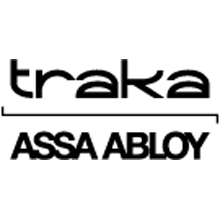 |
| Traka’s integration facilities can ensure keys and assets are returned at the end of each day before staff leave site |
The role of water companies in national infrastructure cannot be understated. Each utility company has a separate set of assets ranging from facilities to machinery, critical not only for success as a business, but also as a resource of welfare to the others using the water.
Asset management and protection throughout the water and utility industry are factors that have never been more important. Utility companies are far reaching, often at times encompassing numerous facilities and site locations, with an expanded amount of assets and in turn, a critical need for focus on security and responsibility.
The flexibility and protection of key management is another critical area of improvement that water companies are benefitting from. With multiple water stations and facilities sited at different locations, staff can quickly be granted authorisation to access keys with the press of a button, allowing supervisors to adjust their security based on the needs of the business.
Because of the customisation ability, the use of key management systems is continuing to grow throughout the water and utility sectors as assets increase and varying levels of access management can be set through the system. Traka has been a critical source of key management solutions, providing asset protection and process control for the industry with smart cabinets and lockers integrated alongside efficient software. This allows the keys to the most important assets for water companies to be secure in a locker or cabinet instead of being carried around by a security guard or supervisor.
Integration is the most important factor for asset protection within water companies. Operators for water stations and utility companies can now combine the security of their keys and other assets with current access control products and systems giving them complete on-site access and asset control through one platform. Furthermore, with Traka’s seamless integration facilities can ensure keys and assets are returned at the end of each day before staff leave site.
This comes at a time when the use of conventional keys continues to be the major liability for water and energy companies worldwide. With many of these companies having expanded infrastructure and multiple facilities, workers are carrying around bunches of keys with little organisation and process control, risking misplacement and possible theft or damage to valuable assets.
Because the risk of misuse is high and damage to a water facility would have such a far reaching effect, many of these utility organisations are taking the right steps towards complete security and asset protection for their sites and facilities. Many have chosen to increase their monitoring with fully audited systems, as well as improve their processes, while others have decided to move forward with stronger measures and revamp their conventional protection systems for the better.


















